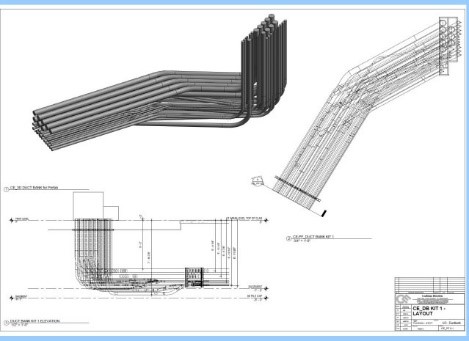For decades, building designers, engineers and leading MEP contractors have been engaged in embracing progressive technology adoption, especially as three dimensional modeling became a standard tool for assuring the highest possible accuracy and constructability in design and construction. Lately the modeling revolution has found a new layer of innovation associated with the addition of database intelligence to the many advantages associated with the widespread acceptance of Revit to the Autodesk line of modeling software. With its concept of “families,” Revit brought the power of database technology to design, simplifying revisions and coordination of specs as projects evolve through and beyond traditional front-end design. Indeed, the “families” concept simplifies the management of common data-sets within the model promoting collaboration and change-management in particular and between disciplines as well as offering tools specific to key disciplines and areas of design specialization.
Common objects with sharable attributes acquire a new level of memory and “intelligence” within the model so that the “building information” component of BIM acquires some real  “muscle” in ways traditional linear design software simply couldn’t. This “intelligence” has had significant impact on electrical design as electrical contractors pursue increased constructability through MEP collaboration. Here, the value of data in design and construction is undeniable and increasingly indispensable as electrical designers adapt Revit and related tools to the most demanding project assignments. Nowhere is this felt more profoundly than in hospital and healthcare construction, where complexity of building systems and technology adoption in general have become central challenges to the building community.
“muscle” in ways traditional linear design software simply couldn’t. This “intelligence” has had significant impact on electrical design as electrical contractors pursue increased constructability through MEP collaboration. Here, the value of data in design and construction is undeniable and increasingly indispensable as electrical designers adapt Revit and related tools to the most demanding project assignments. Nowhere is this felt more profoundly than in hospital and healthcare construction, where complexity of building systems and technology adoption in general have become central challenges to the building community.
Among the innovations advancing electrical design and construction in the industry as a whole, has been the migration of leading suppliers into advanced technology adoption. Seeing firsthand the impact of pre-planning and prestaging on the productivity of all parties including suppliers of materials and tools they were concerned to stay relevant to the rapidly evolving nature of the industry as a whole. When margins reach newer more challenging levels, “smarter” has begun to eclipse merely “cheaper” when it comes to procurement. This principle wasn’t lost on progressive suppliers to the electrical industry such as Southwire Inc. and its Applied Software subsidiary who began adopting and testing a new class of BIM modeling applications designed to bring substantial additional automation to support of the electrical design and constructability mission. This is especially urgent in addressing the technical density of today’s healthcare and hospital design and construction environment.
Among the features of the software revolution in the making are the adaptations of database applications affecting modeling content at every level of electrical construction, in support of estimating, calculating and adjusting electrical system loads in distribution design as well as assuring constructability. Increased accuracy in the model gets applied to the physical design while providing more accurate bills of material in convenient Excel formats. Additionally, with the growing demand for precision at the level of station point creation and validation, a data-driven capability for electrical design to “remember” components and tolerances becomes increasingly indispensable in optimizing quality as well as on time delivery. On top of this, at the level of crews assembling and installing the design, this same intelligence gets to be applied to a host of applications, especially with the growing importance of prefabrication in hospital construction, where repeatability and accuracy of every measurable component from conduit and wire-pulls to headwalls and a host of other complex frequently repeated applications. Automation applied to a prefab system incorporating manufacturing precision with offsite production benefits supported by just-in-time delivery is rapidly bringing a genuine revolution to improved productivity while achieving the highest quality fit and finish.